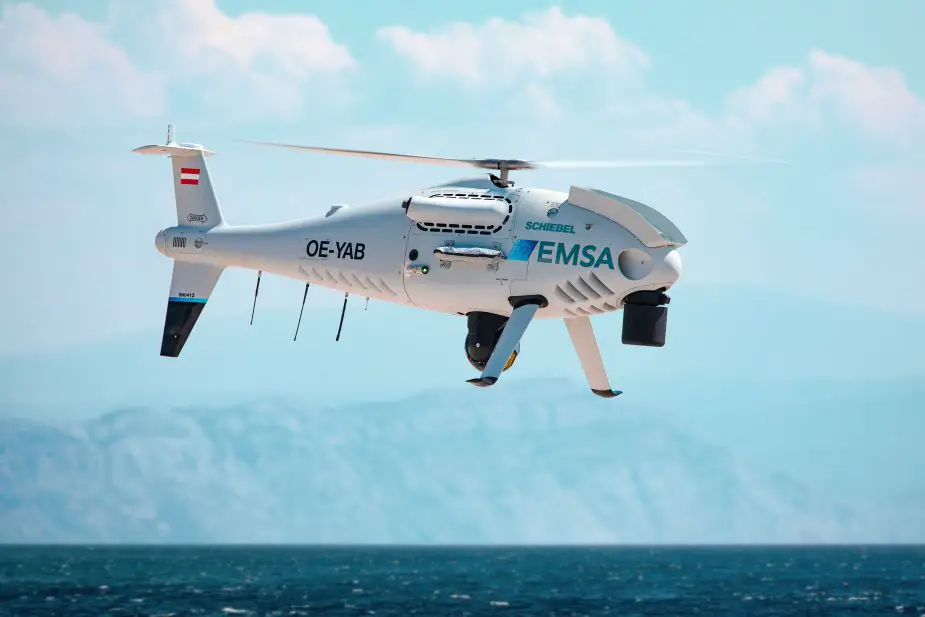Breaking news
Finnish Border Guard will operate the Schiebel CAMCOPTER S-100 for maritime surveillance.
The Finnish Border Guard will operate the CAMCOPTER S-100 for maritime surveillance purposes. The Remotely Piloted Aircraft System (RPAS) service is offered by the European Maritime Safety Agency (EMSA) and will also extend to Estonia and Sweden.
Follow Navy Recognition on Google News at this link
 The CAMCOPTER S-100 (Picture source: Schiebel)
The CAMCOPTER S-100 (Picture source: Schiebel)
The CAMCOPTER S-100 will support the Finnish authorities in carrying out Coast Guard functions, such as search and rescue, monitoring and surveillance, ship and port security, vessel traffic, environmental protection and response, ship casualty assistance, as well as accident and disaster response. The S-100 will execute these tasks equipped with an L3 Wescam Electro-Optical / Infra-Red (EO/IR) camera gimbal, an Overwatch Imaging PT-8 Oceanwatch, a Becker Avionics BD406 Emergency Beacon Locator and an Automatic Identification System (AIS) receiver.
EMSA awarded the multi-year maritime surveillance contract for a Vertical Takeoff and Landing (VTOL) RPAS to Schiebel in November 2018. In the execution of this contract, Schiebel provides simultaneous maritime surveillance services to several EU member states and EU bodies. Currently, the CAMCOPTER S-100 is also operational in the Republic of Croatia supporting the Maritime Safety Directorate of the Ministry of Sea, Transport and Infrastructure of the Republic of Croatia.
Hans Georg Schiebel, Chairman of the Schiebel Group, said: “The S-100 has extensive experience in the maritime domain. It is the UAS of choice when it comes to sophisticated maritime surveillance. We’re proud to be EMSA’s chosen RPAS providing vital surveillance services to its member states.”
About the CAMCOPTER S-100:
Schiebel’s CAMCOPTER S-100 Unmanned Air System (UAS) is an operationally proven capability for military and civilian applications. The Vertical Takeoff and Landing (VTOL) UAS requires no prepared area or supporting equipment to enable launch and recovery. It operates by day and by night, under adverse weather conditions, with a beyond line-of-sight capability out to 200 km / 108 nm, over land and sea. Its carbon fiber and titanium fuselage provide capacity for a wide range of payload/endurance.


























